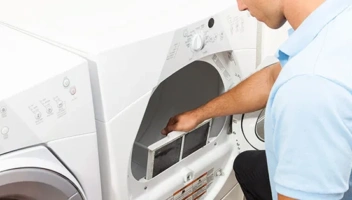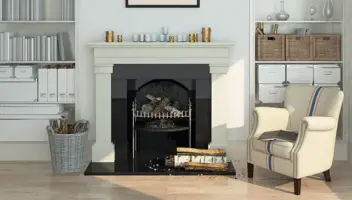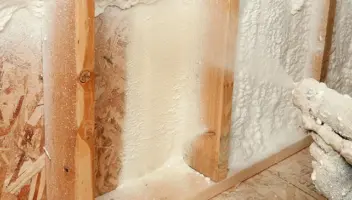Tips to Improve Indoor Air Quality

How much of your time do you spend indoors? Between work or school, down time, and sleep, some people may spend up to 90% of their time indoors. If the air quality in your home or work environment is poor, this means you’re being exposed to harmful air pollutants for long periods of time.
You may even unknowingly be at risk of something called Sick Building Syndrome. People with Sick Building Syndrome typically present with negative health effects – like asthma, skin irritation, headaches, and more – all due to poor air quality.
Seem scary? Don’t worry! There are many ways you can improve indoor air quality and prevent Sick Building Syndrome. Here are our top three suggestions:
Keep a Clean Home
Keeping a clean home sounds like an easy solution, but there are a lot of factors to consider. There are many different things that impact air quality, and each one requires a different cleaning method. Here are some of the top offenders:
- Dust – This is perhaps the most common air quality issue homeowners face. Dust buildup can be tricky to keep up with, but it is important to vacuum and dust on a weekly basis, including those hard to reach, out of sight spaces. The vacuum itself can also contribute to poor air quality. To keep dust completely contained, invest in a bagged vacuum as opposed to a bagless one, and change the bags regularly.
You should also make sure cloth materials, like curtains and bed spreads, are occasionally aired out or washed to get rid of dust buildup.
- Mold and mildew – Once mold and mildew take hold, it can be difficult to get rid of completely. It’s especially common in bathrooms, laundry rooms, kitchens, attics, and basements.
Prevention methods, like using a dehumidifier in damp areas such as the bathroom and laundry rooms, properly ventilating the attic and basement, throwing out old food, maintaining appliances, and regularly washing towels, can help immensely.
Standing water is another huge issue homeowners face because it is the perfect breeding ground for mold. Clogged gutters can cause standing water, as well as poor yard drainage, kiddie pools, and birdbaths. Keep an eye out for standing water, and take care of the issue as soon as it arises.
If mold has already taken hold, you’ll need to carefully evaluate the situation. For small amounts of mold, certain cleaners can take care of the issue. However, extreme cases may require mold remediation and prevention.
- Environmental allergens – The trees and flowers may look pretty outdoors, but their pollen will inevitably make its way inside you home. You can track it in on your clothes and shoes, and it can blow in when you open windows and doors. Your best defense is to vacuum and dust, and take your allergy medications until allergy season ends.
- Pet dander – Your furry friend is cute and cuddly, but it can also cause a lot of air quality problems in your home. The never ending fur and dander your pet sheds can be difficult to keep up with, so it’s important to vacuum and dust more frequently if you have pets in your home to cut down on these potential irritants.
- Smoke – Cigarette smoke is well-known issue for indoor air quality, but did you know things like candles, wood burning stoves, and fireplaces can also pose a risk to your health? If you can’t part with these sources of smoke, make sure your home is adequately ventilated and that you regularly clean up soot. You can also try burning soy candles, and avoid burning pressure- or chemically-treated wood.
- Debris from renovations or new construction – Any type of construction on your home will leave remnants and particles, such as carpet fibers, paint fumes, dry wall dust, and saw dust, all of which can lower air quality. Try to contain your construction to one part of the home by putting up plastic tarps and using an air filter every time you work.
- Other hazards like radon, carbon monoxide, asbestos, lead, and more – These hazards are more common in old homes, but can occur in new construction as well. Test kits and alarms are available at home improvement stores to detect radon, carbon monoxide, and other toxic chemicals and gases in your home. A home inspection can determine whether there is any asbestos or lead present, and whether it requires professional removal.
Also, never start your car or any other gas powered machine inside a closed garage. This will cause a toxic buildup of carbon monoxide, which will harm your health. Be very careful to avoid toxic fumes from paint and other aerosol materials (called Volatile Organic Compounds, or VOCs) as well, as these may not stay contained to your garage, and can infiltrate your home.
Use Air-Filtering Plants
Air-filtering plants can be extremely helpful in the battle for clean air. By nature, plants take in carbon dioxide and emit oxygen, but some also filter out harmful air pollutants like benzene, ammonia, formaldehyde, and more. Several studies, including one conducted by NASA, have found that certain plants can drastically help improve indoor air quality.
Just make sure any plants you have in your home are non-toxic if you have pets or small children in your home. Here’s a list of some common, non-toxic, air filtering plants to get you started:
- Boston Fern
- Spider Plant
- Barberton Daisy
- Rubber Plant
- Banana Tree
- Orchids
If you don’t have any pets or children, these plants (which can be toxic if ingested) are the best at filtering the air:
- English Ivy
- Snake Plant
- Peace Lily
- Chrysanthemum
Reduce Air Pollutant Exposure
There are also many ways you can limit your exposure to air pollutants. Here are four strategies to start today:
- Stop using toxic chemicals, practice green cleaning – Many mainstream cleaning products contain toxic chemicals. Eliminate things like aerosol sprays, bleach solutions, and things that contain VOCs. Try using eco-friendly cleaning products, or all natural cleaning solutions like vinegar, instead.
- Install a HEPA filter and get an air purifier – HEPA filters and air purifiers will take care of the air quality issues that your plants can’t naturally filter out. Make sure to change filters and clean purifiers regularly so that they continue working to their full capacity.
- Regularly inspect your home – Problems with pipes, ventilation systems, furnaces, air conditioners, hot water tanks, appliances, and more can become huge air pollutants. Make sure to regularly inspect your home for any such issues, and repair them before a problem arises.
- Worst Case Scenario: Move – If you live in an area with a high concentration of air pollutants you can’t control, like you would find near a factory, power plant, or highly populated cities, it may be time to consider moving to protect your health. Discuss the health implications with your physician to make the right decision for you.
If you follow these simple tips, you should be well on your way to having fresh, clean air in your home.
Have you ever experienced Sick Building Syndrome? Do you have any other tips to improve air quality? Tell us in the comments!


